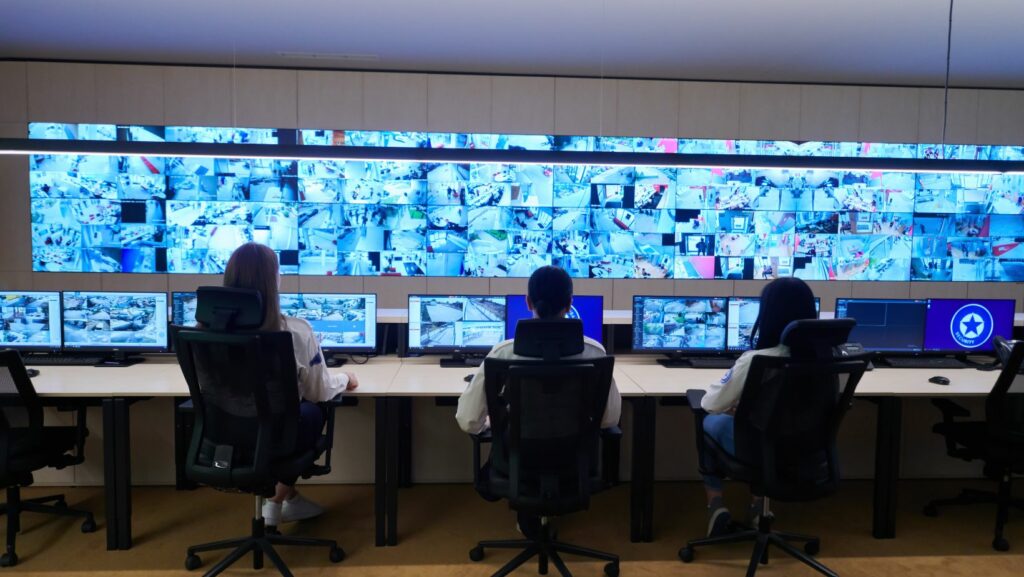In the vast digital universe, operating systems serve as the lifeblood of computers. They’re the unsung heroes, silently orchestrating the symphony of software and hardware interactions that make our daily computing tasks possible.
Stay tuned as we embark on this enlightening exploration, promising to deepen your understanding and appreciation of the technological marvels we often take for granted.
Loading Operating System
 Revealing the unseen choreography of data, this section highlights the details on loading operating systems. Emphasis lies on understanding the inner workings of this technical process.
Revealing the unseen choreography of data, this section highlights the details on loading operating systems. Emphasis lies on understanding the inner workings of this technical process.
Unseen by users, the boot process forms an intricate dance of technology. Start with the push of the power button, and a series of predefined tasks begin to unfold. At first, the motherboard’s firmware, known as the Basic Input Output System (BIOS) or Unified Extensible Firmware Interface (UEFI), comes to life. It conduct routine check-ups for hardware functionality known as Power-On Self Test (POST). Upon passing the POST, BIOS or UEFI locates and loads the bootloader program from the boot sector.
Types of Operating Systems to Load
Traditional Desktop Operating Systems
Desktop Loading operating systems sit at the core of traditional computing. They offer users a comprehensive workspace enabling them to create, manage, and store files, run applications, and connect to the internet. Examples of traditional desktop operating systems include Microsoft Windows, Apple’s macOS, and several distributions of Linux like Ubuntu and Fedora.
Server Operating Systems
Server Loading operating systems, tailored for enterprise-level operations, manage networks, storage, and application services for multiple concurrent users. Microsoft’s Windows Server, Ubuntu Server, and Red Hat Enterprise Linux Server are conventional examples.
Windows Server, equipped with built-in security and cloud-ready features, holds the mandate for the smooth operation of most corporate networks.
Mobile Operating Systems
In contemporary computing, mobile Loading operating systems have ascended to prominence due to the surge in smartphone usage. Dominant players include Android and iOS, both optimized to ensure touchscreen manipulation, lock screen functionality, and versatile app stores.
Primarily Android, developed by Google, powers a plethora of devices due to its open-source nature. Manufacturers can tweak and mold the operating system to accommodate their specific utility needs.
Loading Operating Systems on Different Devices
By abstracting the hardware complexities, Operating Systems (OS) serve as software maestros. They orchestrate the symphony of activities that occur within Personal Computers (PCs), mobile devices, and servers. Opt for the appropriate OS type, and it’ll pave the path for an optimized and seamless user journey.
Loading on Personal Computers
 When it comes to personal computers, the OS—whether it’s Windows, macOS, or Linux—is the central player for effective task execution. Post the boot-up process involving BIOS or UEFI, the PC spins its magic, loading the OS. The desktop UI unfurls, laying out a clean slate for user interaction. This process, proverbially simpler in Mac machines due to their own ecosystem, presents more configuration options in Windows and Linux. Using bootable USB drives or DVDs, users get the flexibility to install, reboot, and load the OS.
When it comes to personal computers, the OS—whether it’s Windows, macOS, or Linux—is the central player for effective task execution. Post the boot-up process involving BIOS or UEFI, the PC spins its magic, loading the OS. The desktop UI unfurls, laying out a clean slate for user interaction. This process, proverbially simpler in Mac machines due to their own ecosystem, presents more configuration options in Windows and Linux. Using bootable USB drives or DVDs, users get the flexibility to install, reboot, and load the OS.
For mobile devices, the situation exhibits a discernable difference from PCs. Loading an OS on a smartphone or tablet typically involves a process commonly termed ‘flashing.’ Android devices often employ custom ROMs, which are modified versions of Android, for this process.
Loading on Servers
Servers, the bedrock of the internet, sport an entirely unique approach to loading an OS. Linux distributions—like Ubuntu Server, CentOS, or Red Hat Enterprise Linux—are preferred due to their higher stability and control, improved security, and open-source nature. The installation process can vary, but it usually involves uploading the ISO file to the server and directing the server’s boot process towards this ISO.
Must Know
Understanding the intricacies of loading operating systems is a pivotal skill in today’s tech-driven world. It’s not just about turning on a device, it’s about the complex processes that occur behind the scenes. From the transition from BIOS to UEFI, the unique characteristics of desktop, server, and mobile loading operating systems, to the emerging trends in fast boot technologies and cloud-based solutions, it’s clear that OS loading is an evolving field. Future developments promise even faster boot times, power efficiency, and the convenience of OSaaS.

